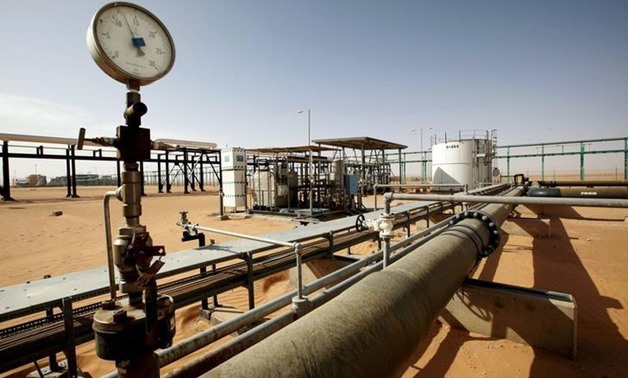
FILE PHOTO: A general view of the El Sharara oilfield, Libya December 3, 2014. REUTERS/Ismail Zitouny/File Photo
SEOUL - 26 December 2018: Oil prices were mixed on Wednesday as the U.S. benchmark rebounded from steep losses in the previous session, even though concern over the health of the global economy continued to overshadow the market.
U.S. West Texas Intermediate (WTI) crude futures CLc1, were up 13 cents, or 0.31 percent, at $42.66 per barrel, at 0748 GMT. Prices earlier rose as much as 2 percent. They slumped 6.7 percent in the previous session to $42.53 a barrel, the lowest since June 2017.
Brent crude oil futures LCOc1 were down 29 cents, or 0.57 percent, at $50.18 a barrel and earlier fell to the lowest since July 2017. They skidded 6.2 percent in the previous session to $50.47 a barrel.
“$50 is a psychological support level (for Brent),” said Margaret Yang, a market analyst for CMC Markets in Singapore.
“But market confidence needs to be restored for oil price...that include an equity market rebound and/or a bigger production cut from major oil exporters,” Yang said, referring to an OPEC-led agreement to lower output starting next month.
Broader financial markets have been under pressure on worries about a global economic slowdown amid higher U.S. interest rates and the U.S.-China trade dispute.
“U.S. equity futures are trading a bit firmer this morning triggering some little buying interest in the oil markets,” said Stephen Innes, head of trading for Asia-Pacific at futures brokerage Oanda in Singapore.
But Innes added macroeconomics fears will continue unless the Organization of the Petroleum Exporting Countries (OPEC) “reassures markets the viability of their supply cuts and even impose deeper ones as some members have suggested”. OPEC and allies led by Russia agreed this month to cut oil production by 1.2 million barrels per day.
Russian Energy Minister Alexander Novak said on Tuesday that oil prices would become more stable in the first half of 2019, supported by OPEC and non-OPEC countries’ joint efforts to cut output.
Kazakhstan, a party to the supply cut agreement, expects the participants of the OPEC and non-OPEC agreement to stabilize oil prices in the first quarter of next year and make a joint statement next month to support the market, Energy minister Kanat Bozumbayev said on Wednesday.
Elsewhere, U.S. political turmoil triggered by the partial shutdown of the federal government is also adding to market concerns. President Donald Trump said on Tuesday that a government shutdown could last until his demand for funds to build a U.S.-Mexico border is met.

Comments
Leave a Comment